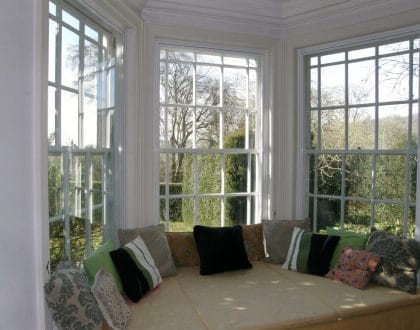The Science of Sound: How Secondary Glazing Reduces Noise

by Narzema Arif
Noise pollution is more than just an annoyance; it’s a proven contributor to stress and decreased quality of life. Secondary glazing tackles this problem head-on by employing several soundproofing mechanisms. Let’s delve deeper into how this transformative home improvement method works to create a quieter living space.
Sound Waves and Windows
To understand how secondary glazing reduces noise, it’s essential to grasp the basics of sound waves. Sound travels in waves through air, hitting obstacles (like windows) and either passing through, reflecting back, or being absorbed. Standard single-glazed windows offer little resistance to these waves, allowing a significant amount of noise to penetrate your home.
The Secondary Glazing Barrier
Creating a Physical Barrier: Secondary glazing introduces a second layer of glass or acrylic inside your existing windows. This additional barrier disrupts the path of sound waves, significantly reducing the amount of noise that can travel through.
The Gap Factor: The space between your original window and the secondary pane is crucial. This gap, often filled with air, acts as a buffer zone. When sound waves hit the first pane, their energy diminishes as they travel through the gap before reaching the second pane. The wider the gap, the more effective the noise reduction, as the sound waves lose energy.
Materials and Thickness
Glass Type and Thickness: Not all glass is created equal when it comes to soundproofing. Laminated glass, for example, is highly effective in dampening noise due to its layered structure with an interlayer of polyvinyl butyral (PVB). The thickness of the glass also matters; thicker glass provides better noise reduction. However, even standard glass used in secondary glazing adds a significant level of soundproofing.
The Role of Air
Acoustic Insulation: Air trapped between the original window and the secondary pane serves as an acoustic insulator. The trapped air absorbs and dissipates sound waves, making it harder for noise to pass through. Some advanced systems use argon or other gases in the gap for even better soundproofing.
Sound Frequency Targeting: Different materials and configurations can target specific frequencies of noise. For example, low-frequency sounds (like traffic noise) require different treatments compared to high-frequency sounds (like birds chirping). Secondary glazing can be tailored to address the specific noise pollution in your area.
Installation Precision
Sealing and Gaps: Proper installation is vital for maximizing noise reduction. Professional installers ensure that the secondary glazing is perfectly sealed with no gaps. Even small gaps can allow sound waves to leak through, undermining the effectiveness of the secondary glazing.
Frame Design: The design of the frame holding the secondary glazing also plays a role. Frames with built-in soundproofing features, such as acoustic seals, further enhance the noise reduction capabilities.
Real-World Impact
Consider real-life scenarios where secondary glazing can make a noticeable difference:
Urban Dwellers: If you live in a bustling city, secondary glazing can drastically reduce the sounds of traffic, sirens, and general street noise, making your home a peaceful retreat.
Near Railways or Airports: Homes near railways or airports are subjected to intermittent but loud noise. Secondary glazing helps in cutting down the high decibel levels associated with trains and airplanes, allowing for uninterrupted sleep and relaxation.
Home Offices: With more people working from home, creating a quiet workspace is essential. Secondary glazing helps to block out distracting external noise, improving concentration and productivity.
Conclusion
Secondary glazing is more than a practical upgrade; it’s a pathway to serenity. By understanding and leveraging the science of sound, it creates an effective barrier against noise pollution. The result is a quieter, more peaceful home environment that not only enhances your quality of life but also adds value to your property. Embrace the quiet and experience the transformative power of secondary glazing in your home. Get in touch today with the team at Clearview Secondary Glazing on 0114 308 0530 to find out how we can make your home a quieter, peaceful space.
Recommended Posts

Top Tips For Soundproofing Your Bedroom
08/07/2025


